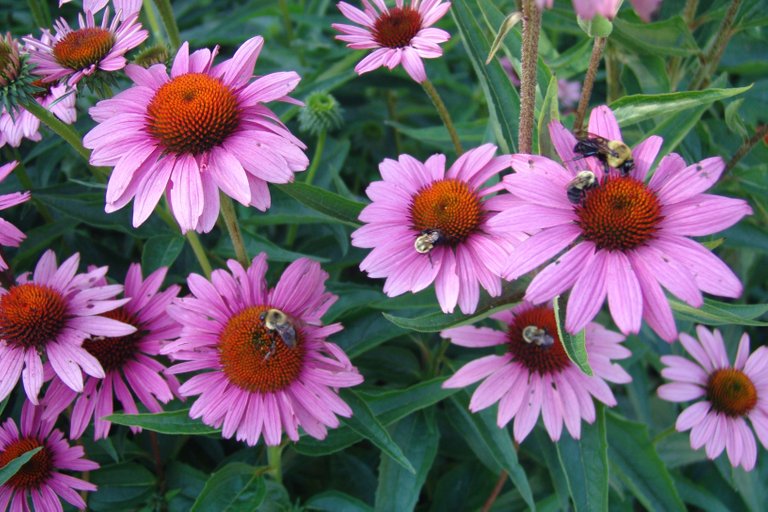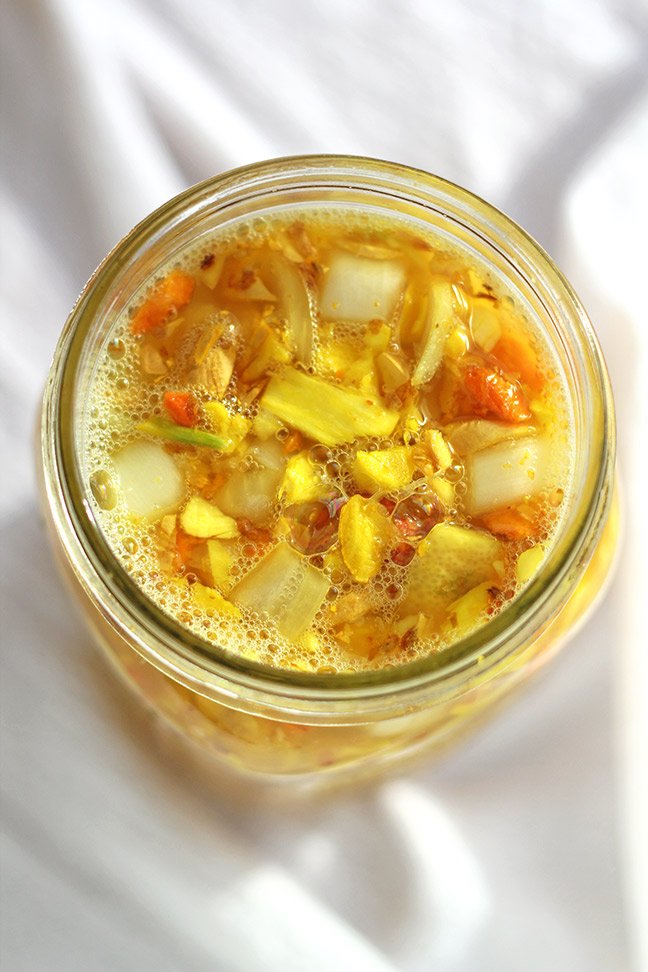All of a sudden, those of us who live in the Northern Hemisphere find ourselves facing down the prospect of another winter. The days are short, the air is chill, and our bodies are more prone to incapacitation by infection, exhaustion, and transmissible disease now more than any other time of the year. But fortunately for us, our grandmothers knew a thing or two about how to make it through the cold season with their heads held high and in good health — and its more than chicken soup and warm sweaters. Modern medical science is now confirming that many of the recipes and remedies that have been passed down through the ages actually work, especially when used in conjunction with recent advances in the science of well-being. In the hopes of helping you feel great all winter long, we have compiled some of the most well-vetted wellness techniques in the world below.

HERBAL REMEDIES AND FOOD
The classic symptoms of the common cold are cough, clogged sinuses, and general inflammation. These symptoms are not too bad alone, but if left untreated even for a day they can spiral into whole-body aches and pains, difficulty breathing, and tiredness. Our ancestors have been dealing with this condition since time immemorial, and many of the traditional preparations they created to mitigate colds and flus have been proven to be exceedingly effective.
The most important thing to do when you have a cold is EAT well. Like grandma said, feed a cold. Soups, stews, roasts, and stir-fries combine the benefits of numerous nutritious ingredients into an easy-to-digest dish. That’s step one.
Certain astringent plants, like Echinacea, Goldenseal, Spilanthes, and Osha can immediately calm inflammation in the throat and help to clear the sinuses when taken as teas, tinctures, or even raw. Other herbs are known for their warming (or 'carminative') properties—think Cinnamon, Cayenne, Cardamom and Cloves—and still others are known for their cooling, soothing, and demulcent effects—like Elecampane, Wild Cherry Bark, Slippery Elm, and Licorice. Using all three categories can contribute to your health, especially when combined with proper nutrition and general tonifying herbs like the adaptogens and mineral-rich greens like Dandelion and Nettles.

One popular remedy combines some of the most powerful plants into an admixture called Fire Cider, versions of which can be found at your local health food store or created at home. The recipe for the Fire Cider that saw us through the winter last year is as follows:
- 1 bottle organic Apple Cider Vinegar
- 1 cup Raw Ginger Root, peeled
- ½ cup Fresh Turmeric Root, peeled
- 3 heads of Garlic, peeled
- 5 limes or lemons, peeled
- ½ cup Horseradish root, peeled
- 2 tablespoons cayenne powder OR 5 chili raw peppers (Jalapeno, Habanero or Bird)
- Fresh or Dried Basil, Oregano, Rosemary, Bay Leaf and Marjoram
- Optional ¼ cup Organic Honey, to taste

Combine all fresh ingredients in a blender or food processor with 1 cup distilled water. Blend until smooth consistency is achieved (around 1 minute). Move mixture to a dark glass jar and add ACV and stir in dried herbs. Seal the jar, shake well, then let sit for two weeks in a cool, dark place to allow for fermentation, shaking every few days.
VITAMIN D
For many—especially those born in the brighter months of the year—the most challenging part of the winter isn’t the cold, but the darkness. Years worth of studies have confirmed that nearly 20% of the population suffers from some form of SAD (Seasonal Affective Disorder), which depresses mood and energy levels throughout the winter months. Think of it as a casual, involuntary form of hibernation. For those of us who want to keep moving despite the cold, it is essential to boost Vitamin D levels to help the body convert the elevated melatonin (the sleep hormone) into serotonin (the happy hormone). This can be accomplished by using sublingual D3 supplements (which is also found in Fish Oil), and especially through Light Box therapy, which involves remaining in front of a sunlight-mimicking Full-Spectrum UV light for up to two hours a day. We’ve found it works great when placed in the eastern part of the home and turned on in the morning while one is preparing for the day.
SLEEP + EXERCISE
Once the down comforters come out and the morning wind howls outside the windows, it can be more tempting than ever to hit snooze on the alarm, snuggle up with your tea and significant other (or, barring that, your cat), and lose momentum on your exercise routine. But don’t feel too bad! Experts have demonstrated that people tend to thrive with more sleep, higher caloric intake, and less intensive exercise during the winter months. Something that often gets lost our fitness-obsessed culture is that exercise is meant to help you feel your best — so if you are a runner, yogi, weightlifter, or any other kind of fitness junkie, take one day a week to give yourself that extra hour of sleep, double down on a hearty breakfast, and get out there wearing sufficient layers so that your pursuit of physical health doesn’t end up setting you back.
Stay warm, eat well, see your loved ones often, and remember your grandmother’s immortal advice: wear an extra sweater, just in case!

Sources:
https://www.verywell.com/how-to-make-winter-exercise-easier-1231242
https://www.mayoclinic.org/tests-procedures/light-therapy/home/ovc-20197416
https://blog.mountainroseherbs.com/fire-cider
Great info. Fire cider is on my daily regimen during the winter.
Love the stuff! Shortly after writing this article last week I made a fresh batch for this winter. It doubles as one of the greatest additions to sauces or dressings.
Hello Samuel. I enjoyed reading your post. We have made fire cider a few times and I really love it. We also make kombucha. I haven't gotten into all the herbal remedies. However, today I learned in the Daily Mail curcemin, an ingredient in tumeric helped a women recover from a cancer (http://www.dailymail.co.uk/health/article-5230201/Pensioner-used-turmeric-fight-blood-cancer.html). I am new here as well. So, I hope I referenced that information correctly. Anyhow, great work. The flu has just hit some of my co-workers. So, your information is timely.
Glad to hear from you, Alex.
Yes, turmeric is one of the master tonic roots! My own mom is a survivor and uses it regularly for its anti-inflammatory properties. I've heard also that curcumin is made even more potent when combined with piperine, the alkaloid active in peppercorns.
So glad you enjoyed the article. Lots more to come. Are you posting here too?
Hope you and yours stay safe and warm through the winter and beyond
Hello Samuel. Yup. I am posting here. My day job is long and sometimes hectic. But, I will try to be consistent and persistent. I am amazed that your mom is a survivor. By the time my father was my age he had a couple of heart attacks and a bowel bag. I made a determination that was not going to be my fate. So, let's keep in contact. I will look forward to and respond to your upcoming posts.
Nice article Sam. I will try this useful recipe for the cold and flu season. I think I even saw it before in an article but this is quite useful.